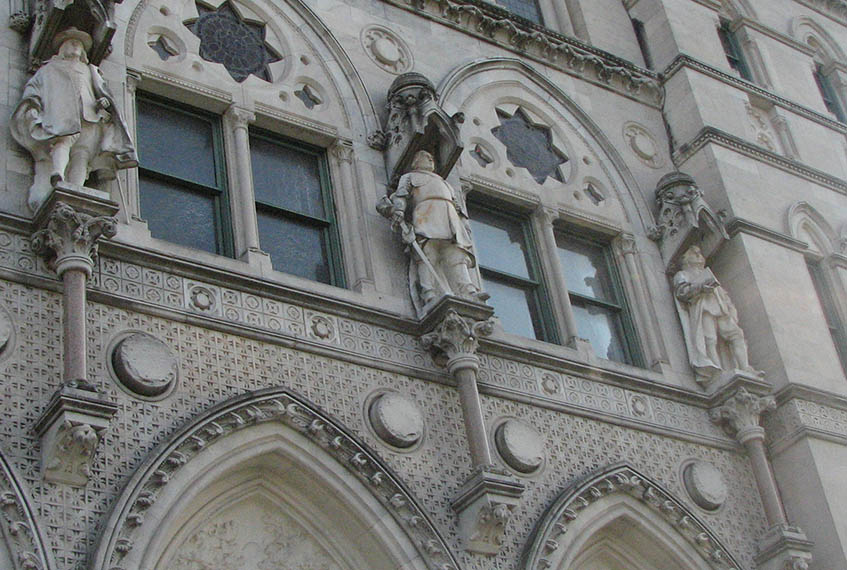
CT News Junkie columnist Susan Bigelow did a great job recently in summarizing the Pequot War of 1636-1638–the conflict in which Windsor’s Captain John Mason led Hartford-area settlers in an attack on a Pequot fort in Mystic. Bigelow provided the history as background for her take on plans to remove a statute of Mason at the state Capitol. As she correctly observed:
“Depending on who you ask, John Mason was either a hero who saved the nascent Puritan colony of Connecticut from destruction at the hands of the Pequots or a murderer who committed a horrific atrocity against Indigenous people by burning Mistick Fort with civilian men, women and children still inside. So which was it?
“Believe it or not, it’s both.”
To arguments that removing the statue amounts to projecting today’s values into the past, Bigelow replied that we should instead look at the values of those who erected the statue. “Both statues of Mason, the one at the Capitol and another originally at Mystic that now stands on Palisado Green in Windsor, were products of the late 19th and early 20th centuries and the paternalistic and superior view of white people toward the natives they had supplanted,” she wrote, adding:
… the people of that time projected their own values, and their own vision of Connecticut, back into the past. That vision of Mason as nothing but a hero who conquered the ‘savages’ is as fundamentally flawed as other heroic American narratives so many of us were taught as children.
The state Office of Legislative Management has more on the history of the Capitol here. (PDF)
